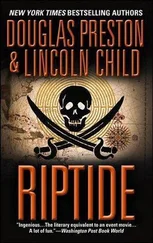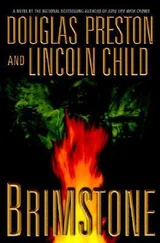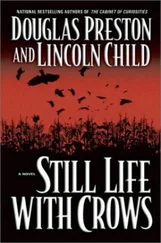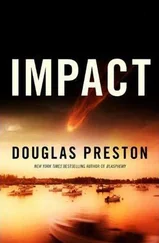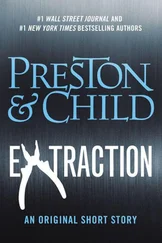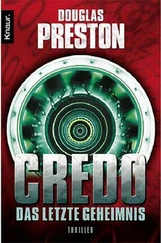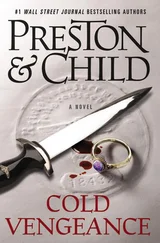Blaine nodded. He had put an enormous amount of trust in the captain, and it was not misplaced. Captain Gurulé was USAMRIID’s most outstanding young microbiologist, vaccinologist, and biodefense researcher, one of the very few people with the clearance to access the smallpox virus. A dazzling man holding both an MD and a PhD from Penn, with uncompromising political views, competent, highly effective—the perfect ally. Courting him had been a very slow and painstaking process, but it had been absolutely critical to the plan.
The lab was virtually empty, as they knew it would be. It was true their every move was being recorded on video, but by the time anyone looked at those videos the whole world would already be aware of what they had done. The terrorist nuclear threat had done its job to perfection.
In a few minutes, they had reached the back of the facility where the Variola was stored in cryogenic suspension, locked in a biosafe inside a walk-in vault. The door to the vault was of stainless steel and identical to a bank safe-depository, modified by USAMRIID for its current, deep-freeze purpose. It was, Captain Gurulé had explained, used for storing the most dangerous, exotic, classified, or genetically engineered microbes.
At the vault door, Captain Gurulé pressed in another code, swiped his card, and turned a tumbler. The door swung open on electronically powered hinges, and they entered. A sudden burst of condensation from the vault’s forty-below temperature clouded their visors. Blaine could start to feel the cold already creeping in. Heavy coats stood on a rack by the door, but the captain waved him past them. “We’ll be out of here quickly,” he said.
The door automatically shut behind them with a deep boom and the click of tumblers. Blaine stood still a moment, waiting for his visor to clear. Then he glanced around.
The vault was surprisingly spacious, with a large central area of stainless-steel tables. They walked past a number of biosafes and cabinets, then passed through a locked door into the inner cage of the vault. Against the far wall, bolted into a framework of angle iron, stood a small biosafe set apart from the others, painted bright yellow and covered with biohazard symbols.
“Please remain standing back, sir,” said the captain.
Blaine held back, waiting.
The captain approached the biosafe, yet again entered a code, and then inserted a special key into a slot on the front. When he turned it, a yellow light began to blink in the ceiling of the vault and a low alert sounded, not loud but insistent.
“What is that?” Blaine asked, alarmed.
“Normal,” said the captain. “It lasts as long as the biosafe is open. There’s no one on the other end checking up on it.”
Inside the safe, on racks, Blaine had a glimpse of the so-called pucks—the white, cryogenically sealed cylinders—that contained the deep frozen, crystallized Variola . He shuddered a moment, thinking of the lethal cocktail each puck contained: the immense amount of pain, suffering, and death enclosed in every one of those little cylinders.
The captain carefully removed one puck from its rack and examined the numbers etched into its side. Nodding to himself, he then took another, identical puck out of his biosuit pouch and placed it in the empty slot in the rack.
One puck was all that was needed. They were designed to keep the virus sealed, in a deep freeze, for at least seventy-two hours—which allowed more than enough time to accomplish their goal.
The captain shut the safe, locked it, and the beeping stopped. He brought the puck over to one of the stainless-steel tables. Blaine knew what he had to do next, and he held his breath in anticipation. It would be a delicate operation.
Laying the puck on the stage of a stereozoom microscope, the captain examined its surface for at least five minutes before making a small mark on it. Then he took a scalpel from the pouch of his biosuit and, with surgical care, cut a small tile of white plastic from the puck. Contained within that tiny piece of plastic, Blaine knew, was a tracking microchip.
The captain flicked the plastic piece to the floor and kicked it under the yellow biosafe with the side of his shoe.
Blaine shivered again. His fingers were already growing numb from the cold. The captain seemed immune.
“I’ll take that, if you don’t mind,” Blaine said, pointing at the puck.
The captain handed it to him. “Be very, very careful, sir. If you drop it, the world as we know it ends.”
A moment later they emerged from the vault, and were forced to wait once again for their visors to unfog. It took longer this time. Even so, everything was ticking along like clockwork.
They made their way back through the lab until they had reached the decontamination showers and air lock. The shower accommodated only one person at a time, and the captain entered first. The automatic door rumbled shut; Blaine could hear the hissing sound of the chemical decontaminants spraying down the captain. The sounds stopped; the outer door opened with a whoosh of the air lock. A moment later the inner door opened to admit him to the shower. He stepped inside and was momentarily engulfed in a blast of chemicals, while a metallic voice instructed him to raise his arms and turn around. Then the door opened and he stepped into the ready room—to find the barrel of a gun pressed immediately against his visor.
“Give me the smallpox,” said a voice Blaine recognized as that of Gideon Crew.
Stone Fordyce heard the chopper before he saw it: a UH-60 Black Hawk, coming in low and fast from the east. He had moved to the far end of the parking lot, near the gates to the motor pool, and he took refuge from the rotor wash behind a Humvee on blocks. The Black Hawk slowed and turned, touching down on the tarmac of the nearly empty lot. Fordyce waited for the craft to settle. As the rotors spun down, the cabin door opened and six SWAT team members hopped out, wearing full body armor and carrying M4 carbines. A moment later a civilian stepped down and Fordyce was startled, and encouraged, to see that Dart himself had come along. More proof that calling Dart had been the right choice.
He watched as they moved out of the backwash and gathered near the doors of the building.
Fordyce straightened up and came out from behind the car, showing himself. Dart saw him and gestured him over.
Fordyce jogged up to the group of soldiers, who fanned out in a semicircle as he arrived—a lieutenant, a warrant officer, and four specialists.
“Are they still inside?” Dart asked, stepping forward.
Fordyce nodded.
“And Crew? Where’s he?”
“Still down in Level Four, as far as I know. As you requested, I’ve initiated no contact.”
“Any sign of activity? Confrontation?”
“No.”
“Any other security involved? Alarms or alerts?”
“Nothing as far as I can tell. It’s been as quiet as a tomb here.”
“Good.” Dart checked his watch. “They’ve been inside for almost fourteen minutes, by my reckoning.” He frowned. “Listen, Agent Fordyce. You’ve done a fine piece of work. But your job is now done and I don’t want anything, and I mean anything , going wrong. We’re going to let the professionals handle it from this point on.” He extended his hand. “Your sidearm, please.”
Fordyce slipped it out of its holster, held it out to Dart butt-first. But even as he did so, he was surprised at the request. “Why do you want it?”
Dart took the weapon, examined it, racked a round into the chamber, then raised his arm and pointed the gun at Fordyce’s chest. “Because I’m going to shoot you with it.”
A noise, shockingly loud; a burst of white; and Fordyce was punched backward, the round striking him square in the breastbone and knocking him to the asphalt. He had never in his entire life been so surprised, and as he stared wide-eyed into an impossibly blue summer sky, he was unable to process what had happened to him even as the last of his life fluttered out, blue rushing to black.
Читать дальше





